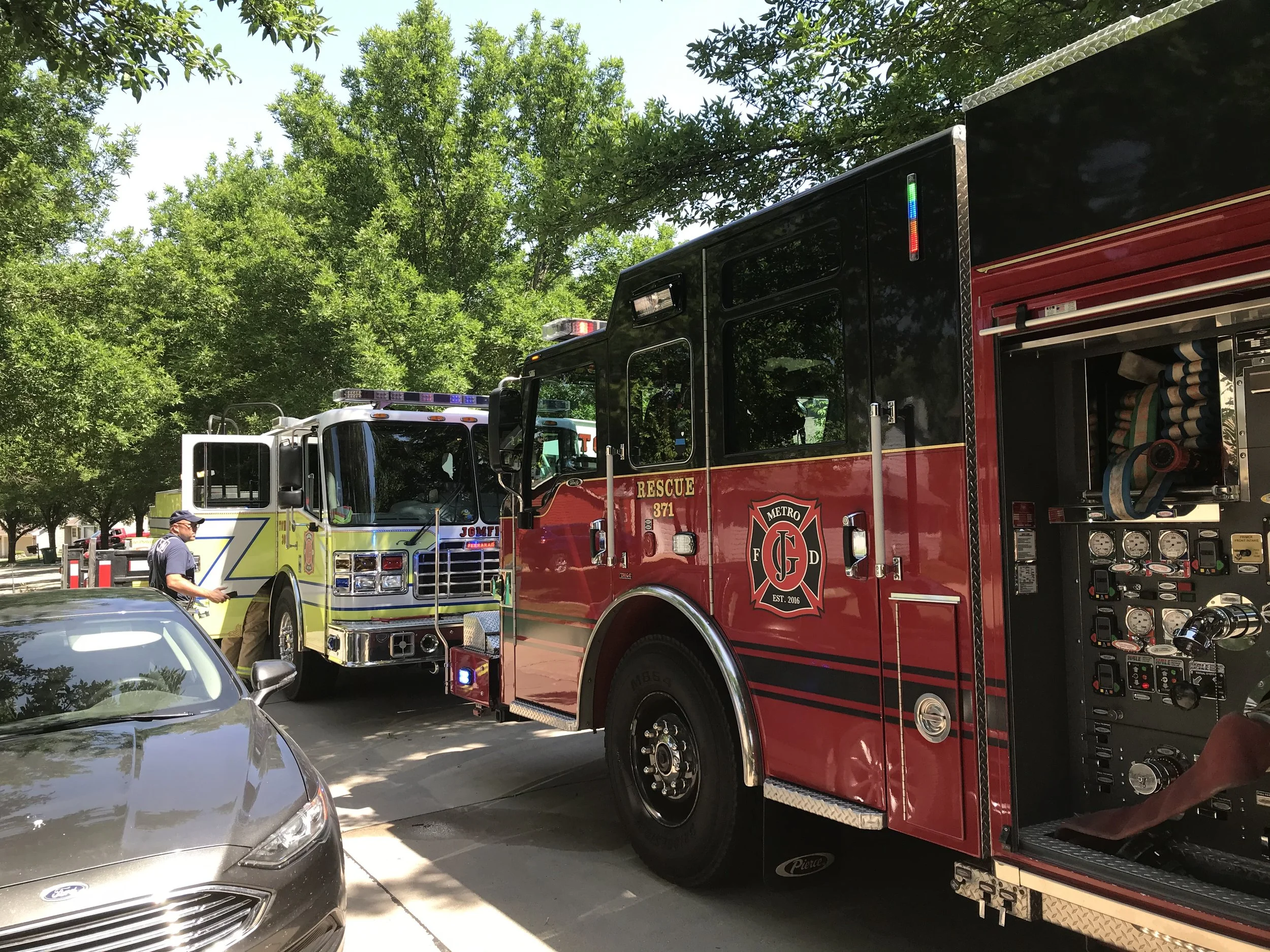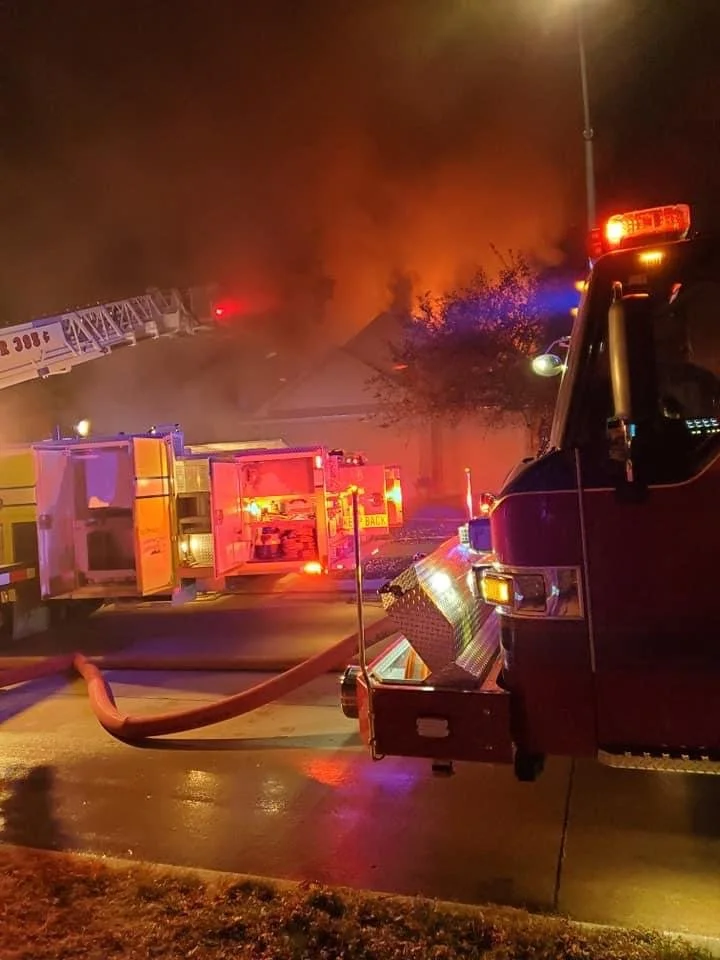Find Your Places: Importance of Apparatus Positioning
On broadway, before the play starts and the curtains are pulled, the actors must position themselves in their starting places to begin the next act, so the saying comes “find your places” is setting the stage of the act to being. When you think about the fireground, it’s nothing more than a chaotic play with higher stakes. A play has a director, actors, and technical roles, and in order for the play to be successful, each must know and understand the their role and have practiced their lines. Everyone has their lines, their positions and their duties but all starts from the first apparatus ‘finding their place’ with appropriate positioning. It takes preparation and coordination long before the curtains are drawn, but once the night is here and the seats are filled, Lights, Camera, ACTION.
Similar to the broadway, the fire service trains countless hours on skills, tactics and knowledge; to be ready to perform when our time arises. We have people set in place to ensure that happens in the fire house and on the fireground. All the training such as throwing ladders, searching rooms, pumping the apparatus, and moving lines; will all assist in accomplishing our goals. One area which many can overlook is apparatus positioning. It’s taking our places prior to the act starting. If one actor is off, doesn’t know their spot or their lines, it will ruin the entire play. If we fail to training and perfect our apparatus positioning, we are not setting our stage to be successful. With one bad position, it will negatively affect all later arriving apparatus and the fireground
The Engineer and Officer play a critical role in the positioning the apparatus whether it be an engine, truck or special unit. We obviously know that the Engineer is operating the apparatus so their involvement is obviously, but the Officer needs to take a proactive approach with training their Engineer for positioning to account for different scenarios. Communication for positioning is often overlooked when we are spotting our targets. Having a common terminology and point of reference will assist in the process. Nick Esposito with Truck Tactics, discuss different options for truck positioning with shooting back, inside or outside position among others. This allows effective communication between himself as the Officer and his Engineer, to properly place the aerial with clear, concise, and common terminology.
FACTORS
Your geography and jurisdiction is going to be the single most important factor that will dictate the positioning needs. Since I live in the suburban environment, that will be our point of reference. This post will specifically discuss residential positioning as we will hit on commercial positioning in a later post.
For emergency vehicles, the minimum street width is 20 feet for two way traffic but streets can stretch 20-40’+ wide depending on lanes, parking, and other factors. In most suburbs, you may even come across boulevards that have a barrier between opposing lanes, roundabouts, and other features. These can all determine the width of the roads and obstacles we may have to overcome not only while positioning, but also when responding.
In suburban residential areas, we should assume that most street will have two lanes with 1 or both side parking spots. That would put us between 29-39’ for typical road width based on the standard spacing for residential roads. The exact layout will vary based on what is common in your area but we can assume most it not all within this range. This may vary depending on the age and era of your jurisdiction. If you live in a suburb that has a many eras, such as pre-WW1/WW2, you will find narrow streets with short setbacks but as we reach newer neighborhoods or developments, we can see how the road grow into the common sizes of today.
PRINCIPLES
When deploying resources with the thought of positioning, it is always preferred to have the truck, mid or rear mount, to position first. Because most suburbs don’t have dual stations with truck and engine, we always need to remember to leave access to the address for the truck if they are arriving later. The Engineer of the engine and the officer must coordinate the positioning especially if the the truck would be arriving in the opposite direction.
ENGINE
As a general rule, the engine should always pull past the address, leaving room for the truck. Our hose can stretch further than their ladders, so getting out of the way so they have the access they need, is critical. The engine should also be aware of the truck’s goal. Nick Esposito also states that the truck should position to access two sides of the building and the roof, opposite of the garage. This ensures that they can achieve their mission in victim rescue and ventilation. The other factor which will influence engine positioning is the location of the hydrant. If the engine has a front bumper intake, it should be preferred to “nose in” to the hydrant. This reduces the amount of supply line needed and it gets the line off the ground and isolated away from traffic. This also allows us to double tap the hydrant without excessive supply line on the ground and quick operations.
When the engine pulls past, aligning the attack hose towards the structure will also facilitate the stretch as well. This means for rear mounted hose beds, the engineer would slightly pull away from the structure at the last minute to kick the hosebed towards the structure. For those with crosslays, it would be the opposite, the engineer would turn towards the structure side to line the crosslays up with the structure. The engine should be positioned on the fire side of the street. This will allow other units access from both directions if needed, and allows for the stacking of units. Once the first engine is in place, later arriving engines can begin to strategically place their apparatus.
The last thing we want is parade parking, where all the units on scene are just parked front to back and stretch for entire blocks. We need to ensure our resources are at the fire building or as close as possible to have quick access to our equipment. Once the Engine and Truck are placed, we can then begin to stack units the width of the street. Ideally, you would want to get two trucks to the fire building if possible, but that may not be a reality or necessary depending on the structure.
As the first due engine, it is also important that you understand what type of truck is coming. Mid-mounts offer different placement requirements than rear mounts. So knowing how much room to leave at the address should be determined by the type of aerial or truck that is arriving first. Mid-mounts have the turntable located in the center of the apparatus, as the name implies, so they will require less space in front. For rear-mount, the turntable is located at the back so they have more truck in front of the turntable so will need more space to position the turntable correctly if they are pulling behind the engine.
TRUCK
The truck has the most difficult job for positioning, as they have the biggest apparatus and have a limited amount of feet to reach their objective. Because of this, they may be required to get creative with their positions and even “beach” the apparatus to get the access they need.
For residential, the truck should also take the fire side of the street and take the address, meaning getting the front of the fire building. Every department may choose to place the turn table in different spots, but the goal should always be two side of the building and the roof. This usually means opposite of the garage but with some two story homes, master bedrooms can be located over the garage. There are no certians or hard fast rules as every situation will be different but we should have some common guidelines.
The turntable will be the focal point of positioning apparatus. This is the pivot which needs to placed correctly in order to get the ladder into proper position. For those who choose to follow Nick Esposito’s rule of two side of the building and the roof, opposite of the garage; the goal should be to place the turntable on the corner of the building so the ladder can stretch parrellel to the side to reach B or D windows and also perpendicular to the front of the house to reach A side windows. Another approach is to leave the address open so the turntable can be placed in the driveway so the ladder has access to the entire alpha side. Depending on the fire location and type of house, this can be beneficial for detached garages or fires located in the garage.
Similar to the engine, the truck should always turn away from the fire side to place the ground ladder tunnel towards the house. This will prevent another unit pulling up too close to the truck that doesn’t allow you to deploy the ladders. This happens quite often so by implementing this simple technique, it allows us access to our equipment. In addition to pulling away and more importantly, this gets the cab out of the way to improve the scrub for our mid-mount trucks. By not “kicking the cab”, the cab of the truck hinders our scrub area because it will interfere with our lateral movement, especially at lower angles.
Above is the basic positioning guidelines for engine and truck operations. As you dive into this more and more, there is much more to account for. Overcoming obstacles are essential for truck operations. They have to overcome trees, power lines, and streetlights for their ladder. They also need to start accounting for their outriggers. These obsctle can be numerous as well such as cars, fences, curbs, and an assortment of other challenges. In this situations, more advanced positioning techniques will be required such as “beaching”, shortjacking, shooting back, outside positioning, among other techniques.
Stay tuned while we dive into truck work in the following posts.




